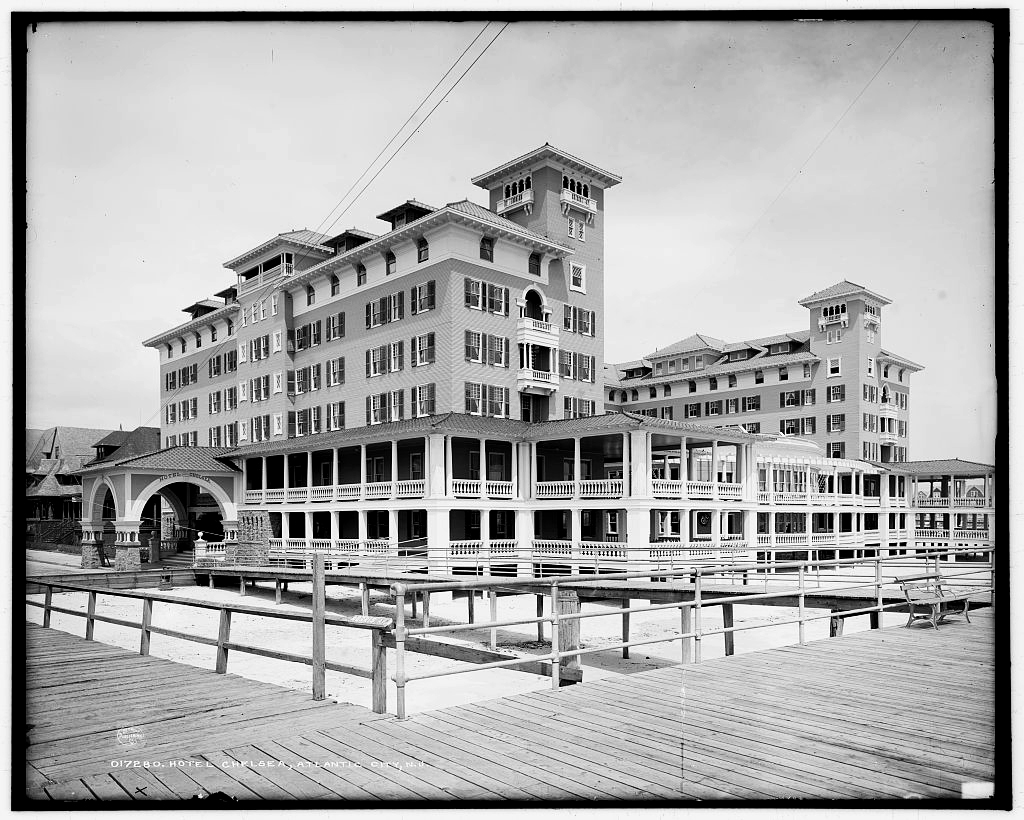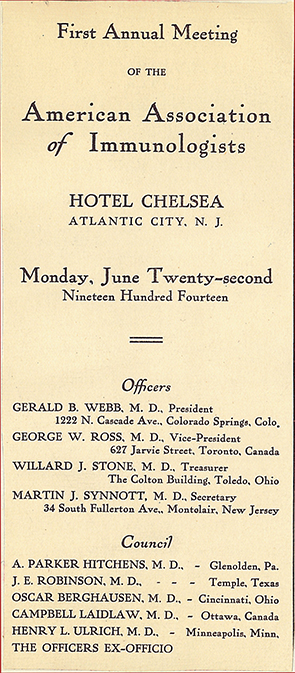Formative Years
Science at the First AAI Annual Meeting
by Mary Litzinger
May/June 2012, page 30
The 18 scientists who met at the Hotel Chelsea in Atlantic City, New Jersey, on June 22, 1914, for the first AAI annual meeting were a mere handful compared with attendance today, yet the scientific basis of later AAI annual meetings was already evident at this first meeting.
 Hotel Chelsea, c.1906
Hotel Chelsea, c.1906
Library of Congress
The attendees discussed a diverse range of topics that would help define the new field of immunology. As most of the early AAI members were clinicians, and as communicable diseases, which today are easily curable, were still a public health menace, many of the presentations at the meeting focused on public health issues of the time—and, not surprisingly, the topics (and terminology) examined in these early years were rather different from those today. Presentations included examinations of “specific ferments” produced by cells against bacteria, a comparison of available diagnostic tests for syphilis, a study of complement fixation tests to determine the causative bacterium in infective arthritis deformans, and an examination of the intraspinal treatment of syphilis with salvarsan, an organoarsenic and anti-syphilitic compound then in use.
The early science was not without its missteps. The meeting began with several presentations on the Aberhalden Test, a test based on “defensive,” specific proteases formed by exposure of cells to a foreign protein and thought to be diagnostic of pregnancy, infection, and cancer. Although the theory of defensive proteases was not supported by later work, and the  AAI Annual Meeting program, 1914
AAI Annual Meeting program, 1914
AAI Archivepregnancy test developed by Aberhalden was ultimately found to be unreliable, William Whitridge Williams (AAI 1913) and Clarence B. Ingraham, both of Denver, Colorado, concluded in their presentation on the Aberhalden Pregnancy Test that the test “might be considered a definite and reliable reaction.” However, there was some disagreement among the attending scientists about the nature of the “ferments” produced by cells upon contact with a foreign organism or protein and whether they were protease- or antibody- based.
Other science presented at the meeting perhaps provided a firmer foundation for future work and discoveries in the field. Several scientists, including F. M. Pottenger (AAI 1913) of Monrovia, California, and Jacob Bronfenbrenner (AAI 1920) of Pittsburgh, Pennsylvania, gave presentations on the merits of tuberculin therapy—the treatment of tuberculosis with extracts of its bacterial cultures. Although the therapy had not been curative, they debated whether the poor efficacy was a result of differences in animal models vs. human patients or the strain from which the tuberculin was isolated. Although this therapy never became the standard of care, due to inconsistent application and considerable side effects, its deficiencies did inform later immunotherapies for tuberculosis.
Of course, as remains true today, several talks at the meeting dealt with technical innovations, such as a technique for preparing bacterial vaccines pure of extraneous proteins from culture media or a method for culturing infected tissue from arthritis patients.
The scientists at the first AAI annual meeting presented their findings, secure in the knowledge that these studies were of critical import to the future of human health. Gerald B. Webb (AAI 1913, president 1913–15) asserted the importance of the organization and the field in the first AAI Presidential Address when he “agreed with [Sir Almroth E.] Wright (AAI 1914 honorary) that the physician of the future would be an immunologist.”
References
- Program of the First Annual Meeting of the American Association of Immunologists. June 21, 1914. AAI Archive, Rockville, MD.